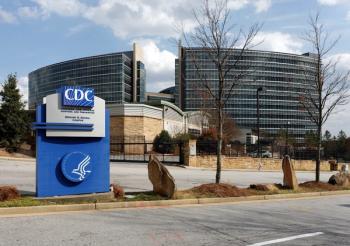
Confronting the childhood vaccination decline
A conversation with AAFP President Tochi Iroku-Malize, M.D., M.P.H., M.B.A.
A report from the Centers for Disease Control and Prevention (CDC) released on January 13, 2023, announced a decline in state-required vaccinations among kindergarten students for the second year in a row. The immunization rate dropped from 94% to 93% during the 2021-2022 school year, continuing a slide from 95% to 94% that began during the 2020-2021 school year.
The CDC concern, shared by physicians and public health officials nationwide, is that even though the return to in-person learning is now nearly universal, the disruptions in health care set in motion by the COVID-19 pandemic persist.
American Academy of Family Physicians president Tochi Iroku-Malize, M.D., M.P.H., M.B.A., spoke recently with Patient Care®, a sister publication of Medical Economics®, about the decline and the impact of COVID-19–driven remote learning on vaccine uptake and vaccine exemptions given by schools. The following transcript has been edited for length and clarity.
Q: Can you provide a brief overview of the CDC report’s findings?
Tochi Iroku-Malize, M.D., M.P.H., M.B.A.: National coverage for vaccinations of kindergarteners has been declining over the past few years. In the school year 2020-2021, the coverage went down from 95% of the population of kindergarteners to 94%. Then the following year, 2021-2022, the rate went down again, to 93%. And what the CDC is thinking is that this decrease in vaccination coverage is due to issues related to COVID-19, including access to the vaccine as well as policies at different schools. Because of the COVID disruptions, schools have given children exemptions for state-required vaccinations. Essentially, they decided to give parents a break and say, “OK, hold on, we’ll give you an extension, your child can come to school without certain vaccines.” And that extension has continued in various areas, whether formally or informally, contributing to many students not getting the required vaccinations.
Q: What are the vaccinations required for this age group before they can attend school in most states?
Iroku-Malize: Most schools follow the CDC Prevention Guidelines in terms of when the vaccines are scheduled and what age groups need to get each vaccine. But the most commonly required are diphtheria, tetanus, and pertussis (DTaP); measles, mumps, and rubella (MMR); polio, Haemophilus influenzae type b; and varicella.
Q: How many children do those percentage decreases represent?
Iroku-Malize: The total population of US kindergarteners is just slightly more than 3.8 million children. That decrease in vaccination rate of 7%, from 100% to 93%, translates to a quarter of a million children. That’s a big number. Without vaccination, those diseases could cause illness and then complications and even death. With full vaccination, kindergarteners will miss fewer school days, be able to socialize, and get the emotional support that comes from being with teachers and other students. And then of course, they’re helping build that “community of immunity.” Remember, there are some children who, for medical reasons, cannot get vaccinated, so they’re immunocompromised. It’s really important for those who can be immunized to get those shots that will help create the community of immunity for their fellow classmates and the others around them who may be at risk.
Q: You referred earlier to students with an exemption from vaccination. The CDC report found that roughly 4% of students are not vaccinated and do not have an exemption.
Iroku-Malize: Yes, this is the result of that “exemption expansion” I described. The schools are saying, “OK, your child had an exemption from vaccination; we’re going to allow you to continue to be exempted,” but it’s not for the usual, previous reasons. So again, formally or informally, the exemption is left in place. Sometimes it’s the schools that don’t want to rock the boat, don’t want to get parents angry with them. Also, in some areas there are some students who are just unable to get access to someone that can provide them with the vaccinations. We know there are inequities in terms of the access to vaccines or to a clinician that can administer them. The American Academy of Family Physicians is urging all who are eligible to get vaccinated and asking all of our clinicians in primary care to continue to talk to patients and recommend that they get all their age- and grade-appropriate vaccinations.
Q: You mentioned that the CDC suggests that the decline in vaccination rates is related to COVID-19 pandemic disruptions. Has that been your experience and that of AAFP members as well? That schedules are off by 18 to 24 months?
Iroku-Malize: Yes, that has been a concern for a number of my colleagues and for me. We see people in the office now who delayed coming in during that period. And we’re now trying to play catch-up. I had a child come in a few months ago who was totally off the schedule for age-appropriate vaccinations. School was starting and this child’s school was now saying, “OK, we’re going to get back on track in terms of vaccinations.” So when he came in, it was just a matter of calming the mom down. “Don’t worry, we’re going to figure out how to get your child back on track.” I was fortunate that the mom had been listening to all the discussions about vaccinations and how it’s important for her child. And so, I was able to say, here’s a review of the vaccination schedule for his age group, here’s what he needed, and here is the new series we will follow to catch him up to where he needs to be. The key thing I would say to family physicians and all in primary care is continue to have that conversation with the parents, saying “Don’t worry, we can play catch-up.”
Q: Pandemic disruptions in access to health care is certainly to blame for the fall in early childhood vaccination. Another cause cited is that misinformation about the COVID-19 vaccine has spread to other vaccines. What is your feeling about this so-called halo effect?
Iroku-Malize: In terms of the halo effect of misinformation with vaccines, I think social media has played a very large role. People end up getting caught in their own bubble of misinformation and stay there, as opposed to seeking out what’s evidence-based. This effect can magnify misinformation around a lot of topics, including vaccines. What I am telling our family physicians, primary care clinicians, and patients, too, is that you have that trusted relationship with one another; that physician has always tried to do what’s in your best interest, to provide you with the latest information they have that will help you stay healthy. I would urge patients, when information comes to you that you question or are unsure of, share it with your family physician. Don’t be afraid, say, “This is what I heard.” For the primary care physician, when you hear that information, listen attentively, and figure out the best way to share the correct information, the latest evidence and why it is important.
Q: What do you see as the role of the family physician with respect to childhood vaccination?
Iroku-Malize: As family physicians, we are a trusted source of information and have the benefit of longitudinal care with a patient and the family. So, to all of you, use that relationship. You play a crucial role in patient education. Answering questions and sharing evidence-based information on an illness, treatment, management is part of patient-centered care. In terms of providing vaccination, family physicians see the gamut—children, adults, grandparents—we see everyone in the family and provide immunization for the entire family. We are well equipped to help all family members play catch-up as needed for vaccinations. Remind patients that they shouldn’t be afraid or intimidated if they miss a vaccination for a child or for themselves. We’ve all seen it before and we understand things happen, life happens, right? Come in, and we’ll help you catch up. Again, we know the patient’s history, we know the nature of the environment in which they live, we understand all of the various elements, external and internal, that play into their health.
Q: Do you have any final thoughts on increasing the rate of childhood vaccinations?
Iroku-Malize: I want to tell my fellow family physicians, “Remind your patients that vaccines are safe, effective, and save lives and we’re trying to build that community of immunity. Be receptive, listen to your patients, to their concerns, and help develop an action plan that can help them. Dispel the myths, gently, and use every visit as an opportunity to provide patient education about vaccines and, if needed, administer those vaccines. And, finally, for anyone who is eligible, please go and
get the vaccinations you are eligible for.”
Newsletter
Stay informed and empowered with Medical Economics enewsletter, delivering expert insights, financial strategies, practice management tips and technology trends — tailored for today’s physicians.















